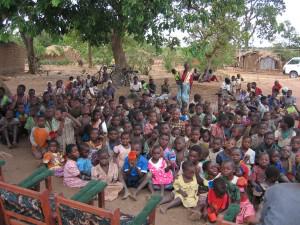The Illusion
International adoptions have an illustrious façade, conjuring images of couples saving a hungry, orphaned child and living happily ever. While imagining international adoptions as a corrupt business is abhorrent, connections to child trafficking have recently arisen. Accordingly, the State Department reports that though Americans adopted 22,991 international children in 2004, the implementation of The Hague Convention on Intercountry Adoption brought about a precipitous drop to 9,319 adoptions in 2011.

Over the past decade, Western investigative journalists led by Scott Carney have published on hidden realities. Despite the illusion that there are more orphans available than parents looking to adopt, there is insatiable demand for children from the developing world, particularly healthy infants.
With this enormous market, many opportunities exist for profit seekers. Promises of astronomical adoption fees motivate orphanages to ensure a steady supply of children. This causes orphanages to resort to drastic measures, even occasionally paying kidnappers directly. According to Carney’s reports in his book The Red Market, the problem is particularly rampant in impoverished Asian countries. Malaysian Social Services, located in Chennai, India, has paid about $236 per child, while China’s Hunan Province hosts institutions that openly purchase children openly for up to $350. Western adoption agencies are not immune from temptation either. Notably, employees of Zoe’s Ark, a French charity, attempted to fly 103 “Sudanese war refugees” from Chad in 2007. Police later determined that most of the children had been taken unwillingly from their families in Chad.
A Limited Solution: The Hague Convention on Intercountry Adoption
Alison Dilworth, the U.S. Department of State’s Adoption Division chief, tells the HPR, “The way we think, of course, is the best way to make adoption ethical and transparent is to fight corruption and for countries to join the Hague Adoption Convention. What we invest a lot of time and resources on is trying to get countries to join the Hague Convention.” The Hague Convention on Intercountry Adoption was concluded in 1993, establishing a humane legal framework for international adoption that would stem child trafficking.
The convention has a system of administrative cooperation in place so that central authorities can communicate with each other. For any given case, there must be licensed intermediaries and accredited bodies present to certify an adoption in the child’s country of origin. However, because of regulatory costs, many developing countries have not agreed to the convention, despite the fact that nearly all Western countries have at least nominally signed on.
Although the convention has benefited from the support of over 80 signatories, it lacks sufficient force to back up its policy prescriptions. Dilworth said the primary enforcement mechanism is that, as “a Hague Convention member, you agree to accredit adoption service providers to work from your country.” While a fair amount of enforcement oversight exists for individual adoption service providers, it assumes that all nations involved in the adoption industry enforce the rules. However, there are few consequences for failing to follow guidelines or refusing to sign the Hague Convention. For example, though Haiti never signed the treaty, other countries can adopt from there.
Continue Reading the Full Article by the Harvard Political Review

